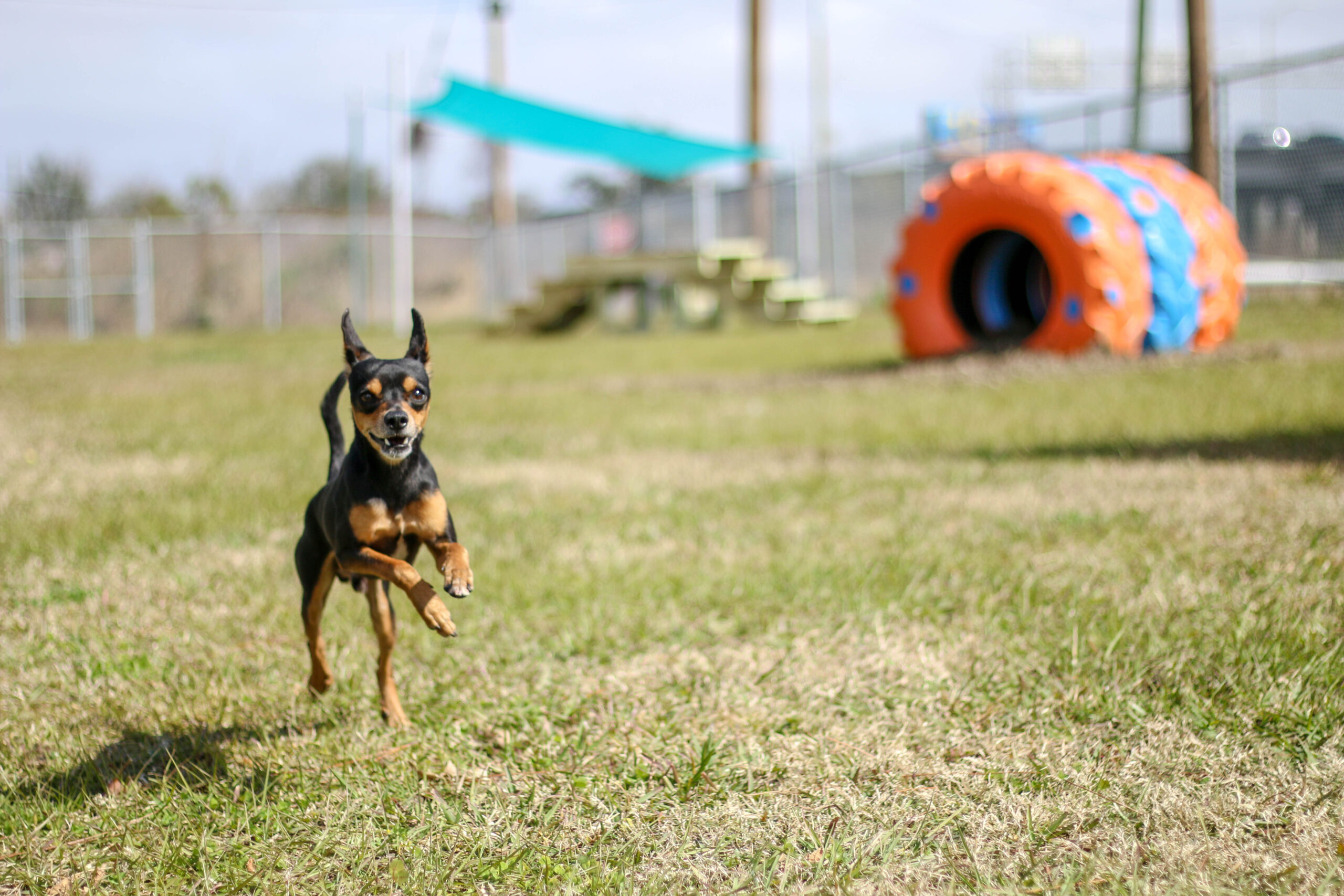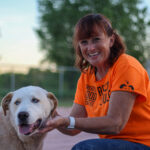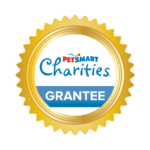One of the first steps to becoming pet-friendly is creating a space for dogs to be dogs – an outdoor area for them to run, play, and potty. You’ve found the right spot and settled on fencing, but what exactly will those puppy paws be running on? Choosing the right surface for your play yard is an important decision, and could mean the difference between an accessible space and a muddy mess. Read on to learn how you can surface your play yard effectively without breaking the bank!
All of the ground cover reviewed in the following article falls into two categories: loose-fill surfacing and unitary surfacing. Loose-fill surfacing is made up of small, individual, loose pieces of material, like gravel, wood chips, or sand, and typically requires a bit more long-term maintenance. As dogs run about, the material will naturally become displaced and will eventually need to be replenished, smoothed out, and leveled. Unitary surfacing refers to ground covering that is solid, such as turf, kennel tiles, or natural grass. Unlike loose-fill surfacing, unitary surfacing requires less maintenance to keep in place, but a bit more to keep it clean and sanitized.
Our Top 5 Ground Cover Recommendations
- Pea Gravel
- Wood Chips
- Grass
- Artificial Turf
- Sand
#1 - Pea Gravel
Our favorite material for dog play yards is, without a doubt, pea gravel! This finely ground and smoothed gravel essentially acts as kitty litter for your dogs. It is a very economical solution ($0.50 – $1.50 per square foot) and is readily available in most locations in the US. It provides natural drainage allowing for easy cleaning with the products of your choice. Pea gravel also looks nice in almost any landscape design, so you won’t have to sacrifice your yard’s aesthetics for your dogs’ bathroom needs.
If you select pea gravel as your surface of choice, keep in mind that you will likely need to replenish the gravel periodically. Some stones will be picked up with dog waste while others will sink into the topsoil below. Typically, the first application of gravel will sink into the soil more quickly than subsequent applications, so plan to “top dress” the area after the first year then again every 3-5 years. Keep in mind that some dogs may try to ingest the gravel, so it’s important to use a rounded rock that will pass through their digestive tract easily. The rounded stone is also gentle on dog paw pads. Depending on the color selected, gravel can become hot in direct sun. If you have a darker rock or if you are in a particularly hot climate, simply hose the rock down with water to allow for evaporative cooling.
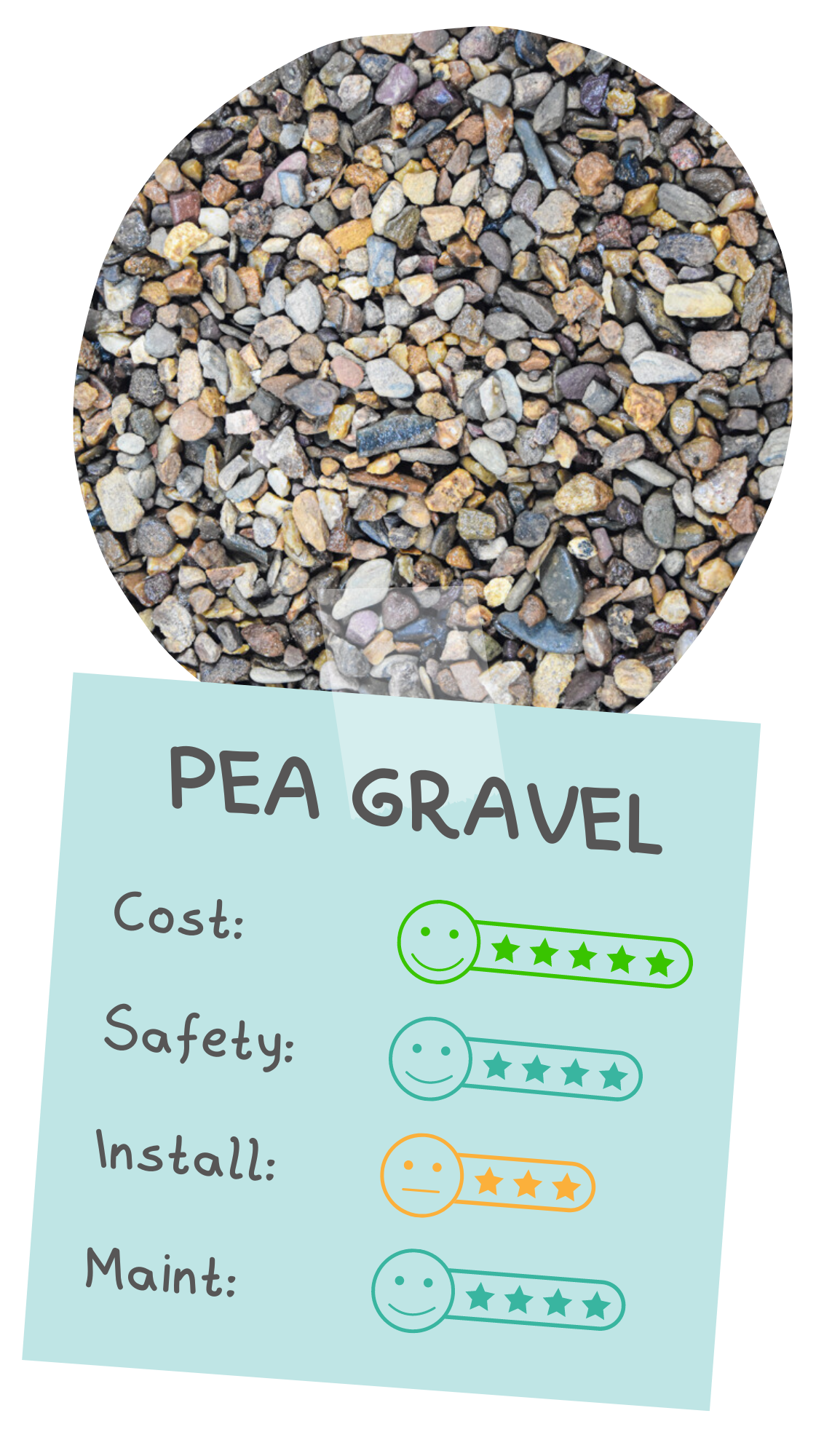
Before installing pea gravel, you will first need to remove the top 3 – 4 inches of dirt, grass, weeds, and roots from the area. If grass continues to grow through the gravel, apply a weed/grass killer like Roundup and give the product the recommended time to dry (typically 24 – 48 hours) before allowing pets inside.
#2 - Wood Chips
Wood chips are the most common type of surfacing found in dog parks today. They are relatively affordable and easy to install yourself! However, there are a few things to keep in mind before selecting them for your play yard. First, let’s review two different types of wood chips that you are likely to encounter: mulch and engineered wood fiber.
Mulch consists of shredded or chipped pieces of wood material, sometimes including bark, branches, and leaves. It is typically very low-cost ($0.15 – $0.40 per square foot) and can even be found for free in many towns. Be mindful however that locally-sourced mulch often comes from locally chipped trees and, depending on the quality of the chipper, may contain sharp pieces that can cause splinters or become embedded in a dog’s paw. Unlike locally-sourced mulch, mulch purchased from a landscape company or box store has been chopped by a much finer wood chipper and is far less likely to contain sharp twig and branch pieces.
Engineered wood fiber (EWF) is the most common type of surfacing found in children’s playgrounds. Unlike mulch, EWF is made from interior wood (inside of the tree) and does not contain bark or twigs. It is ground to a fibrous consistency and sometimes processed or “knit” together to avoid splinters and sharp edges. Engineered wood fiber is much more expensive than mulch (approximately $4 per square foot).
Like gravel, wood chips will naturally become displaced as dogs run and play and will periodically need to be raked back into place. Unlike gravel, wood chips break down over time and typically do not last more than two years before they need to be replenished.
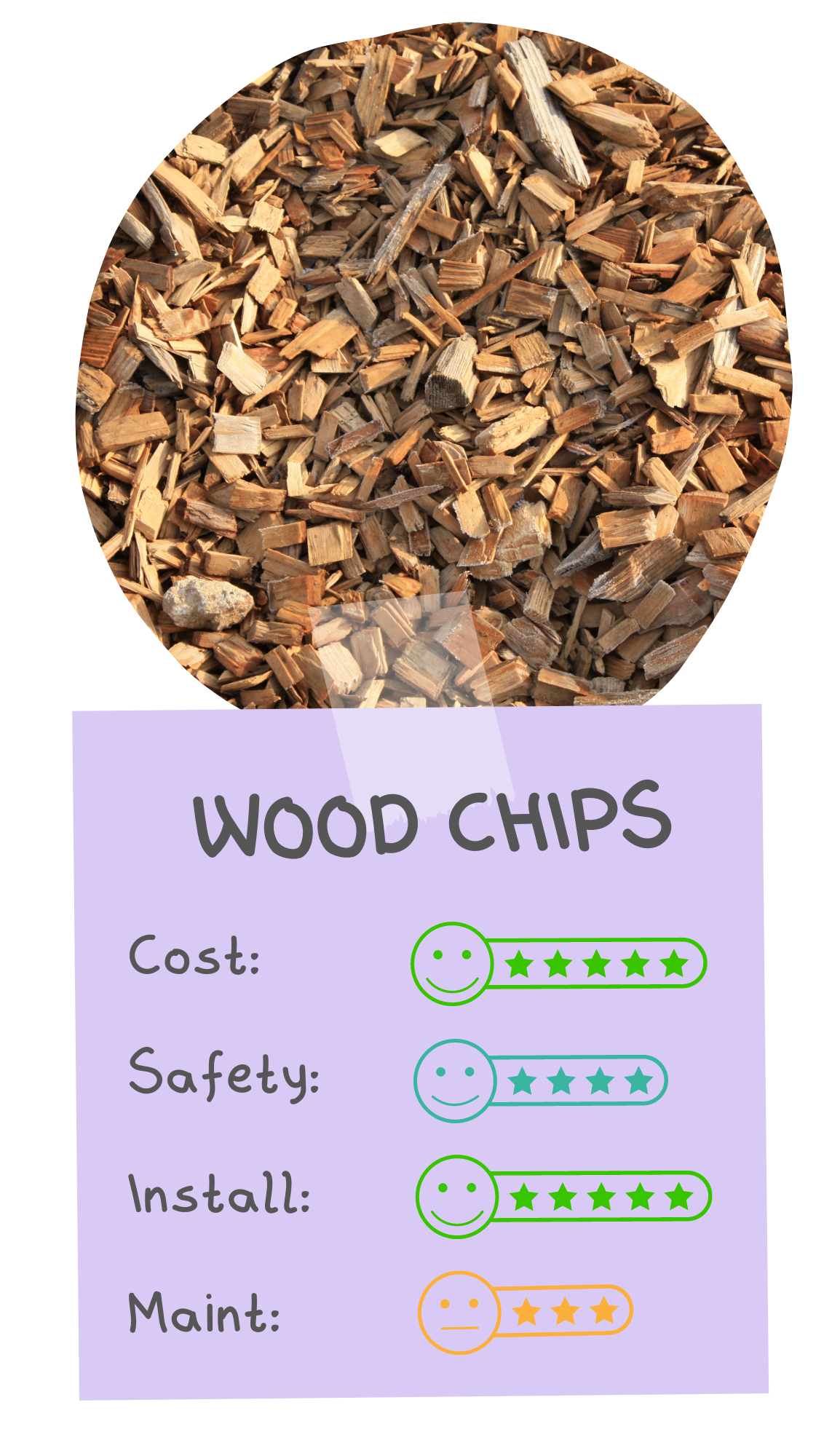
Also keep in mind, not all wood chips are safe for dogs to ingest. Some include dyes, dangerous chemicals, and toxic ingredients, while others have scents that may entice your pooch to chow down, risking stomach upset. Pine bark, cedar bark, fir bark and cypress mulch are some of the best choices for dogs. Another good option is Coco Mulch, made of coconut husks (not to be confused with the dangerous cocoa bean mulch). On the other hand, you will definitely want to avoid Eucalyptus mulch, dyed/chemically treated mulches, mulches containing salvaged wood, and cocoa bean mulch.
Another downside of wood chips is that they are very absorbent. While this might seem like a great property at first, it can mean that odors linger. Some owners report that their mulched potty areas smell terrible after rain. Just as with pea gravel, to prep a play yard for wood chips you will want to remove the top 3 or 4 inches of dirt, grass, and roots to prevent plant growth.
#3 - Grass
Grass can be a great option for larger yards where the price of other materials is prohibitive. Depending on your space, it may be naturally occurring, saving you a significant upfront cost. Even if you do need to install it yourself, grass is a wonderfully inexpensive option. On average, sod costs between $0.35 and $0.80 per square foot. If you elect to seed the grass yourself, cost drops to roughly $0.10 to $0.19 per square foot. Grass is soft on dog paws and provides good natural drainage. It’s also a beautiful option when properly maintained, stays cool even in direct sunlight, and is safe for dogs to ingest (provided you steer clear of herbicides and other chemicals).
Unfortunately, in high-traffic areas, natural grass tends to wear down quickly and leave bare patches of dirt behind. When you add rain, these dirt patches can easily turn into mud pits. If you choose natural grass as your play yard surface, keep in mind that you may need to close your yard periodically, at least in sections, while you re-seed. Natural grass will also need to be maintained through regular watering and trimming, which can add considerable cost over time.
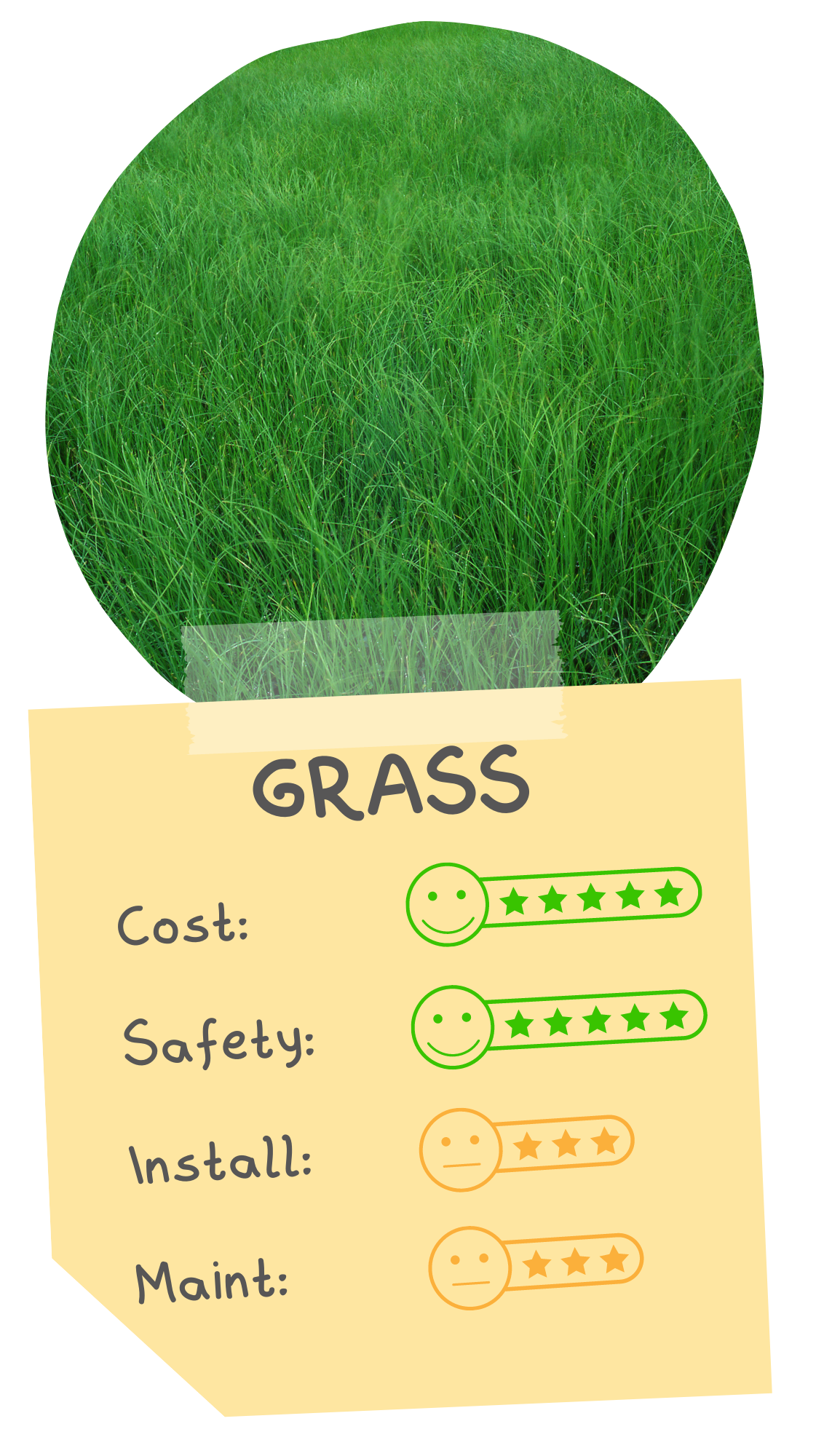
#4 - Artificial Turf
Artificial Turf is beautiful and durable. Depending on your budget, you may be able to afford a product with the look of real grass, but without the danger of wear spots or the additional expense of watering and trimming. Keep in mind that pet waste can be difficult to clean from the longer fibers of high-nap turf, so you will want to look for a product designed specifically for dog parks. When it comes to cost, artificial turf tops our list at approximately $15 per square foot, making it a difficult option for shelters on a budget.
While higher end products may last up to 7-10 years, turf must be installed by a professional if you hope to get that level of longevity. Dog park turf installation will require removing all existing weeds and grass and adding a special drainage base layer to prevent urine pooling. Some high-use dog parks that use turf even have a concrete base with drain pipes to ensure that urine and cleaning products drain properly. However, this step is typically not necessary for low-volume play yards.
When it comes to cleaning your turf yard, specialty products are available that can be sprayed on, then rinsed with a hose. The frequency of cleaning will be based on the volume of pets in your play yard, with high-volume yards requiring a rinse at least once or twice a week.
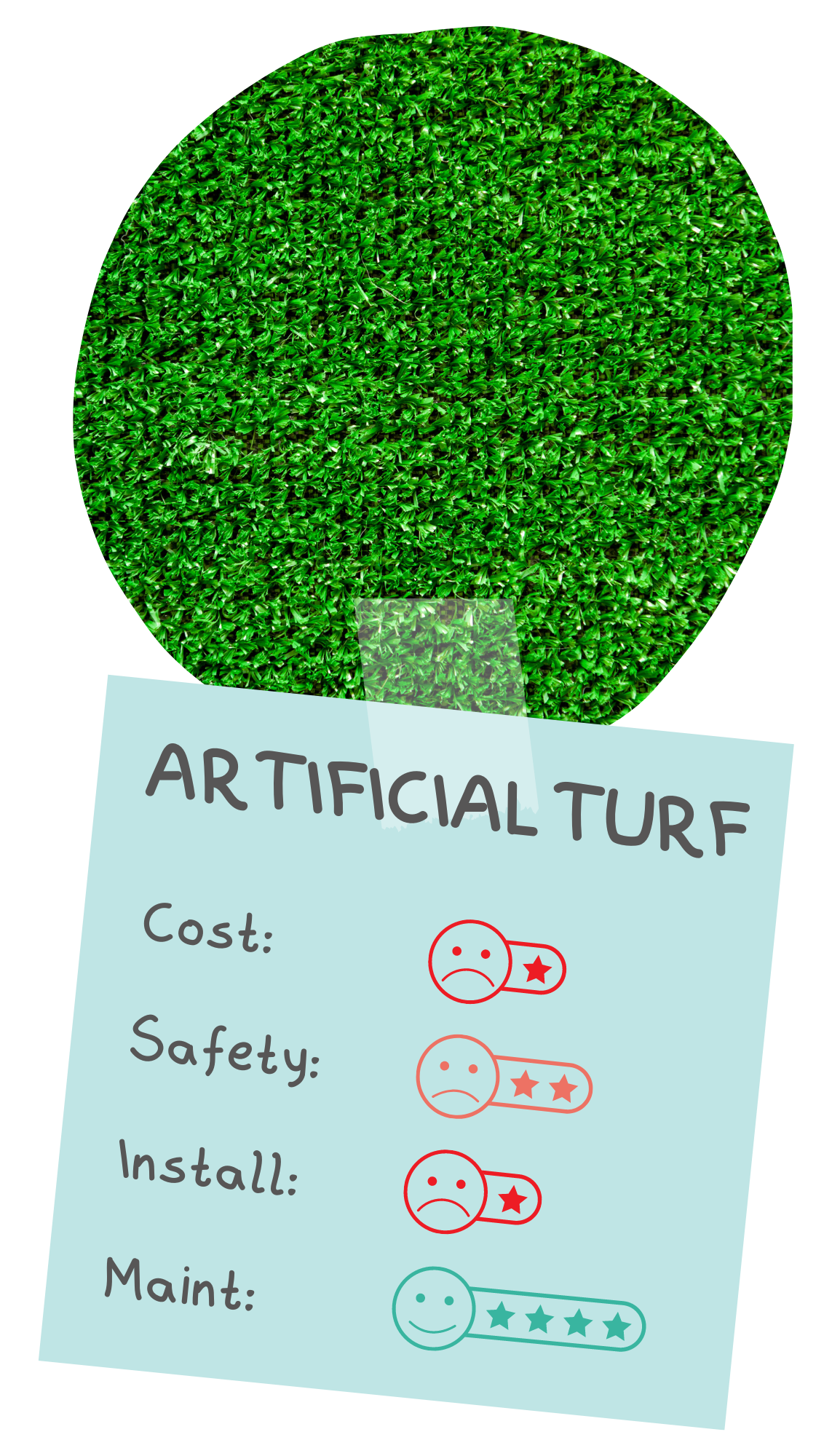
If the price tag isn’t enough to frighten you away, the scorching heat of turf in even the coolest climates just might. A study conducted at Brigham Young University found that the surface temperature of synthetic turf was 37° F hotter than asphalt and 86.5° F hotter than natural grass when exposed to the same climate conditions. On an average summer day, the surface of artificial turf can reach 165° F – hot enough to burn a dog’s paw in seconds. If you are interested in artificial turf as a surface option for your play yard, make sure it is well-shaded, or be prepared to close your yard in the summer months.
#5 - Sand
Sand is a popular surfacing option, particularly for dog parks in coastal areas. It’s relatively low-cost (typically running between $1.50 and $3.00 per square foot) and can be attractive when kept free of debris. It also provides a wonderful opportunity for digging – an enrichment activity that many dogs will love! Unfortunately, all that digging can mean a lot of time spent on clean-up trying to keep the sand contained to your play area.
Like other options listed here, sand can become hot in direct sunlight so extra caution should be taken to avoid burns. Keep in mind that not all sand varieties are safe or appropriate for dogs. Builder’s sand, used in bricklaying, rendering, and plastering, can often be identified by its yellow or orange hue and may contain harmful additives such as silicones and fungicides. Like its name suggests, builder’s sand is made for building and is not designed to come into contact with skin. Play sand on the other hand, has been thoroughly washed and softened using high-pressure water to remove impurities and sharp edges, making it the appropriate choice for play yards!
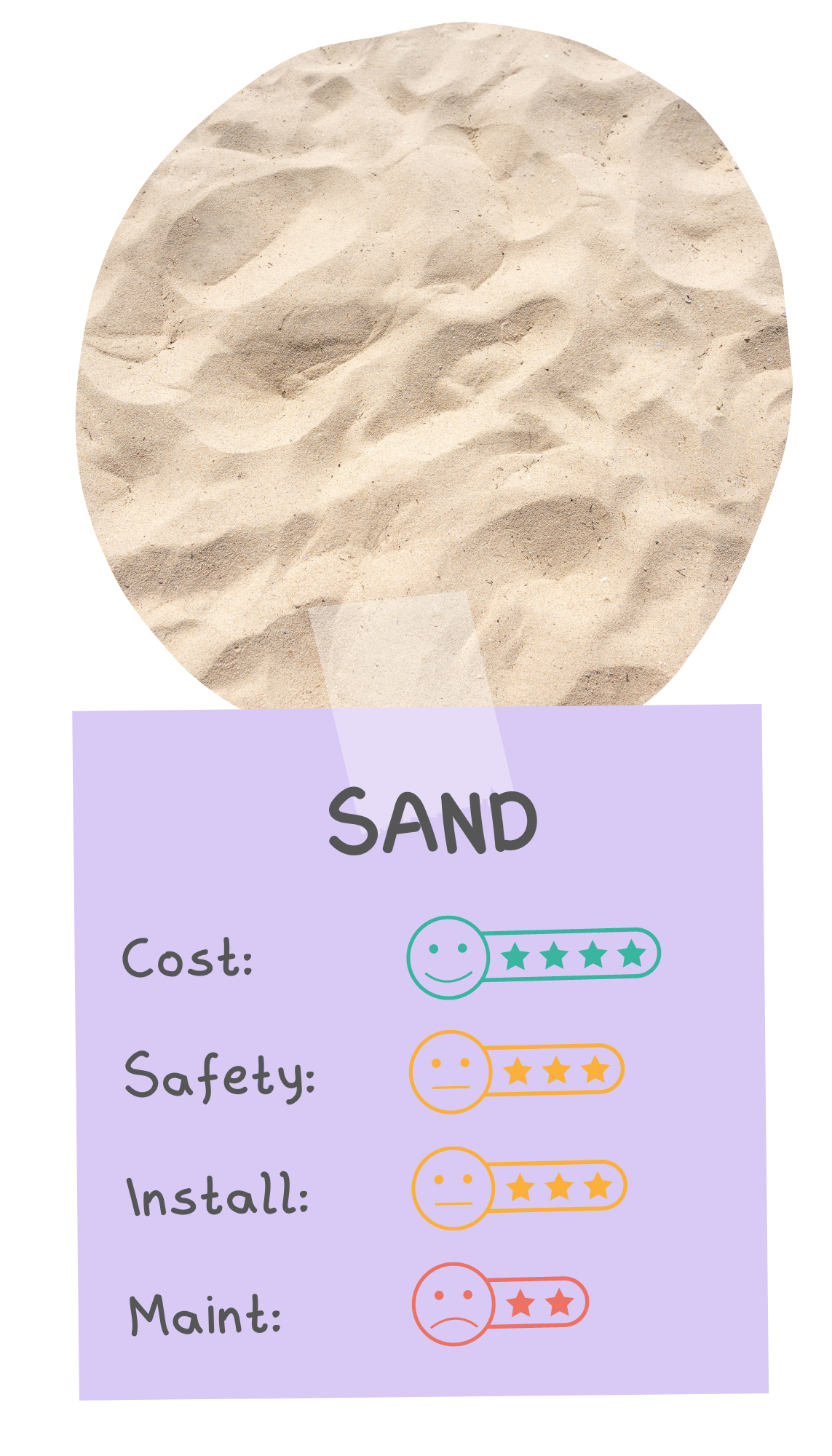
OTHER OPTIONS
Rubber Mulch
Rubber mulch is made with shredded, recycled rubber (typically sourced from tires) and can often be found in children’s playgrounds to provide a cushioned surface. It’s also used in gardens and landscaping to suppress weeds, retain moisture, and regulate soil temperature.
Despite being relatively easy to install and long-lasting, rubber mulch it is not our favorite option for dog play yards. Unlike natural mulch, rubber mulch will not break down in a dog’s digestive tract. As a result, it can be extremely dangerous if swallowed and can lead to digestive blockage, requiring emergency veterinary intervention. It is also relatively costly (approximately $3.50 per square foot) and like turf, can become extremely hot in the sun.
Outdoor Rubber Tiles
Rubber Tiles are another long-lasting form of unitary surfacing. While the product itself is already quite expensive ($3 to $8 per square foot), the additional cost of professional installation (which is highly recommended for longevity) can double or even triple this estimate.
Outdoor rubber tiles can also be very challenging to keep clean. While they may be an excellent choice for children’s playgrounds, dog waste is not easy to get off them. If the tiles are not properly prepped, odors from urine and feces will linger. Like other rubber-based products, these tiles can become very hot in direct sunlight.
FINAL THOUGHTS
We know that choosing the right ground cover for your space can be challenging. Each surfacing option comes with its own unique set of benefits and limitations. The great news is that you don’t have to choose just one! A very popular solution is to add different surfacing elements throughout your play yard to take advantage of their best qualities.
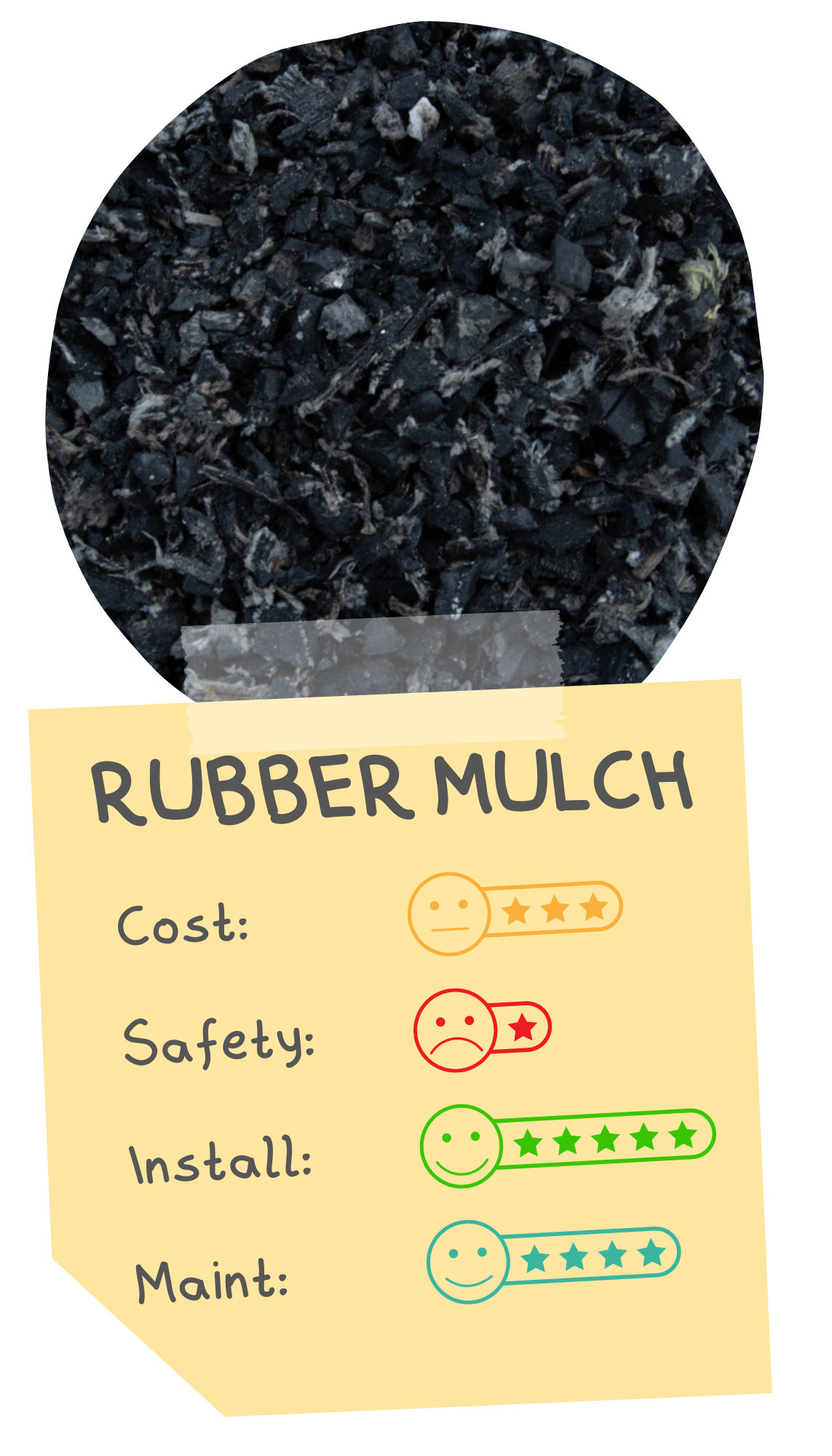

Does your play yard have a well-shaded corner where pet parents might like to spend time relaxing? That might be a great space for artificial turf. Maybe another section gets lots of direct sunlight and will be used for games of fetch. Consider a light-colored pea gravel or wood chips here. Want an extra enrichment element? A sand pit might be a great way for dogs to get out extra energy through digging. Whatever surfacing options you choose, make sure to keep the comfort and safety of your clients and their pets top of mind.
Have additional questions? We’d love to hear from you! Email us at dworks@redrover.org.
